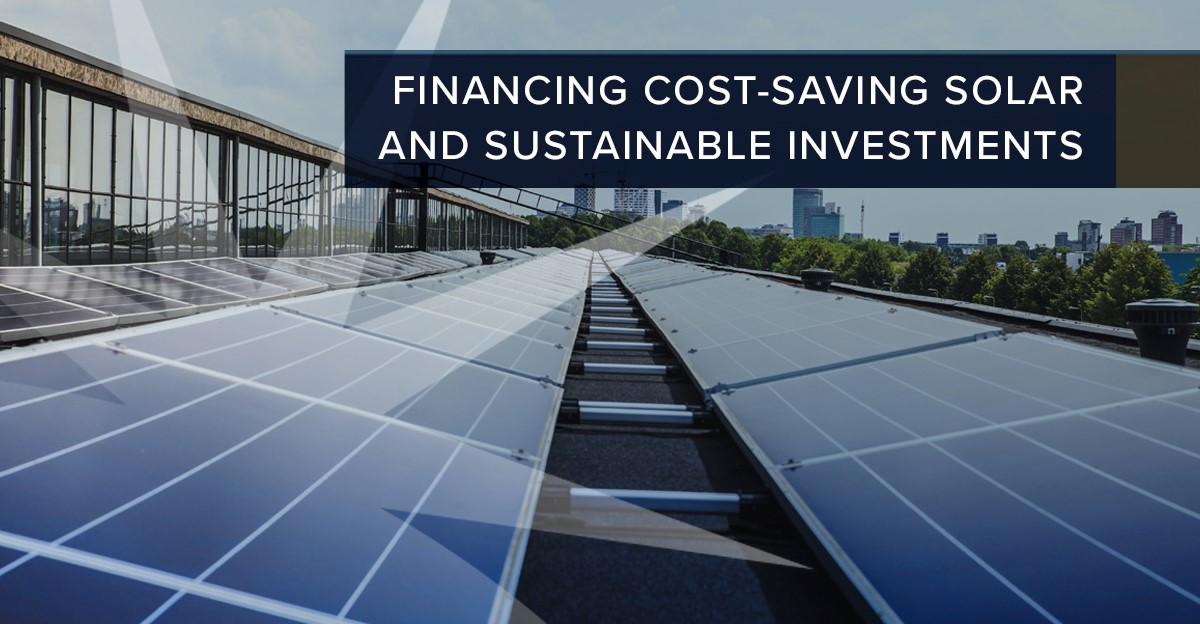
Ohio isn’t exactly the “Sunshine State.” But when it comes to clean energy, it could be. Though wind turbines have just started to dot the Midwest landscape, solar power has been one of the state’s most proven and pervasive alternatives to traditional energy for decades. Our summer skies and brisk winters make solar installations and upgrades a practical and increasingly popular investment for institutions seeking to reduce recurring expenses and their environmental impact.
However, the upfront costs can prove prohibitive in getting solar panels past the planning stages for businesses with competing priorities. That’s when the CFFA can clear away the clouds. Property Assessed Clean Energy (PACE) provides full financing for clean energy upgrades to commercial and industrial buildings with $0 down and low, fixed interest rates — offering savings that can be applied toward repayment with potential immediate positive cash flow.
Though hardly untested technology, solar energy is still a novel prospect for many Ohio businesses, including manufacturers and nonprofits. Geoff Greenfield of Ohio-based Third Sun Solar, a regional expert in both upgrades and incorporating solar energy into new construction projects, shed some light on common questions and concerns when it comes to solar energy.
Why should manufacturers in particular consider solar energy?
The convergence of innovation and economies of scale have reduced the price of solar, while the price of traditional electricity remains a volatile cost center for manufacturers. Solar also differentiates a business, attracting customers and employees while helping companies achieve environmental sustainability goals.
Does Ohio really receive enough sun to make solar energy practical?
The US Department of Energy tracks and maps annual and monthly averages from the National Renewable Energy Laboratory. Ohio’s kilowatt-hours average is four hours a day of peak sunlight throughout the year, more than enough for a solar energy array to meet or significantly offset the demands of any business.
What if our energy demands exceed our energy production?
Over the summer months, solar systems send excess electricity back to the grid, and businesses receive credits for excess production. During the winter, when solar panels may not generate enough electricity to offset use, it’s pulled from the grid and paid for with the credits. This process is called “net-metering”.
Is it easier to upgrade or incorporate solar from the start?
The majority of solar installations are retrofits to existing buildings, working with known structures and site conditions, actual measurements and shade analysis. The advantage of implementing solar on a new build is ensuring the facility is designed to support the structural and electrical requirements of solar.
How does solar complement other investments in energy efficiency?
Solar power is a signature strategy toward overall energy efficiency. Investments like simple conversion to LED lighting, improved insulation, and window upgrades all reduce energy consumption. Additional building controls and monitoring can help control costs and increase the impact of solar energy.
Though PACE is available for all commercial properties, manufacturers may find it offers added benefits. Nationally, manufacturers have received the third highest amount of PACE financing to date, creating on-site energy production that lessens dependence on the grid, reducing utility costs while also earning tax credits. PACE preserves credit lines and cash reserves which can be utilized for expansion, innovation, and additional business opportunities.
PACE legislation now exists in more than 30 states nationwide, creating more than 16,000 jobs and producing more than $1 billion in added value. Manufacturers seeking to decrease costs and invest in other areas of production may benefit greatly from PACE financing, particularly following a financial downturn. CFFA and PACE help businesses finance clean energy upgrades, increasing the stability and changing trajectory of manufacturing companies interested in becoming green manufacturing industry leaders.
